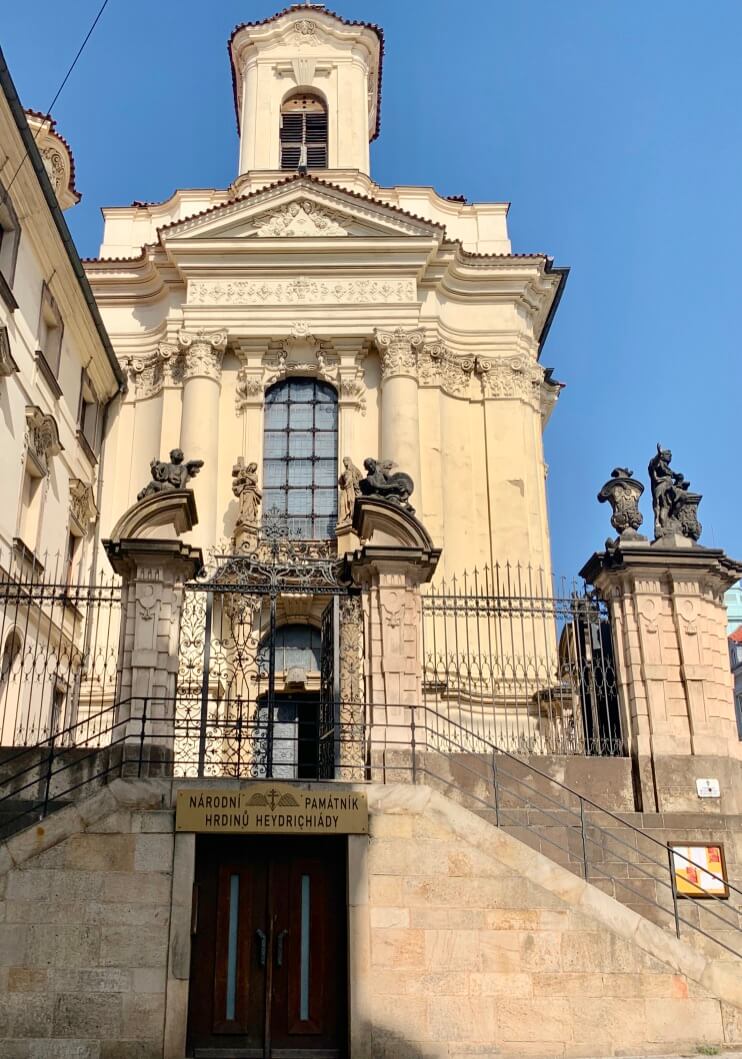Prague. Czech Republic. Day 89 July 27 2019
During my share house era in the early 70’s my room was always enhanced by a set of 4 full-length posters by the Czech artist Alfons Mucha. While the posters have long gone, the memory of Mucha’s work remains.
Yesterday visiting the Mucha Museum I learned that the artist was far more than a painter of posters – it seemed his life work was more about the fight for Czech sovereignty. Today another piece of his history, and that of the city. The first visit of the morning is to Municipal House opened in 1912 after permission was sought and received by the Austro-Hungarian “rulers” of the time. Unable to be deemed of political nature, the house was a cultural centre for the Czech people. Later the place where the Czechoslovak declaration of independence was made.
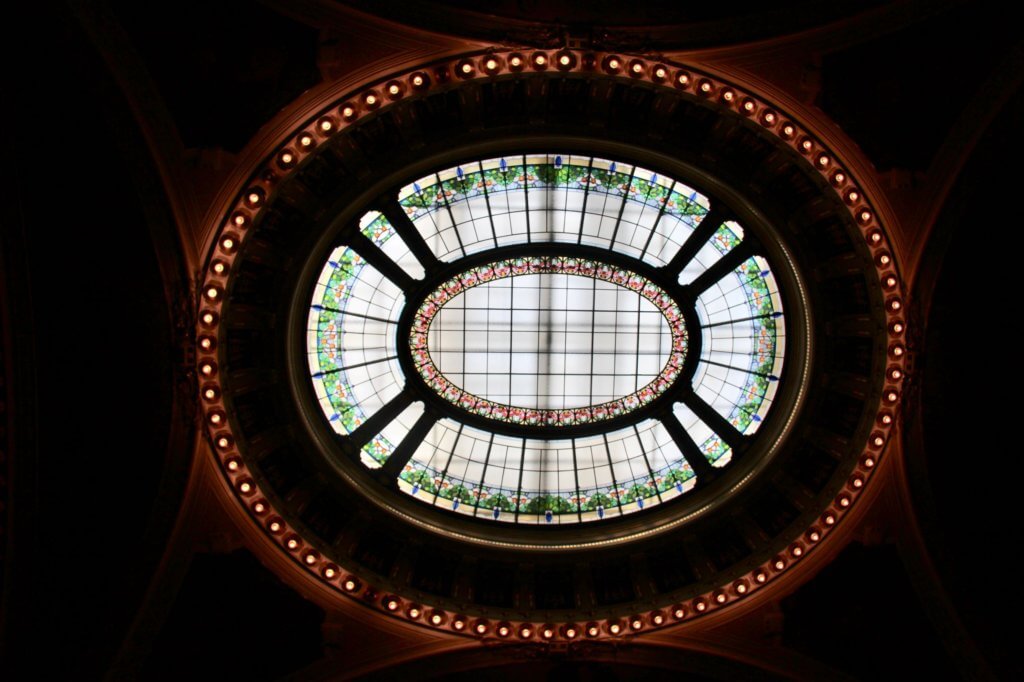
An eye-feast, an extravaganza of design – incorporating Art Deco, Art Nouveau, and a myriad of other decorative elements including stucco, frescoes, stained glass, statues, mosaic. Many Czech craftsmen artists and designers of the time were involved in its design and decoration.
The only way to see through the interior of the building is to attend a concert or take a tour. I can only imagine a concert would be an amazing feast of the senses. Today we took an hour-long tour led by a young woman whose enthusiasm for the building, its history and the history of Prague was knowledgeable and engaging. Her description of it as the most beautiful building in Prague did not seem an outrageous claim after visiting just a small number of rooms.

While much of the building has suffered under history it has recently been completely restored using original materials and structures that remained. The era of Communism was particularly harsh on the building and its interior. No maintenance was undertaken, and destruction wrought by soldiers stationed in the building. The renovation was guided by past documents and histories to ensure authenticity.
Oh, to have been able to attend a function at the house during its first years. A building ahead of its time having electricity, air-conditioning and heating from the outset. Electricity thanks to the engagement of František Křižík? a man who it is said was a pioneer in the “electrification of Bohemia”.
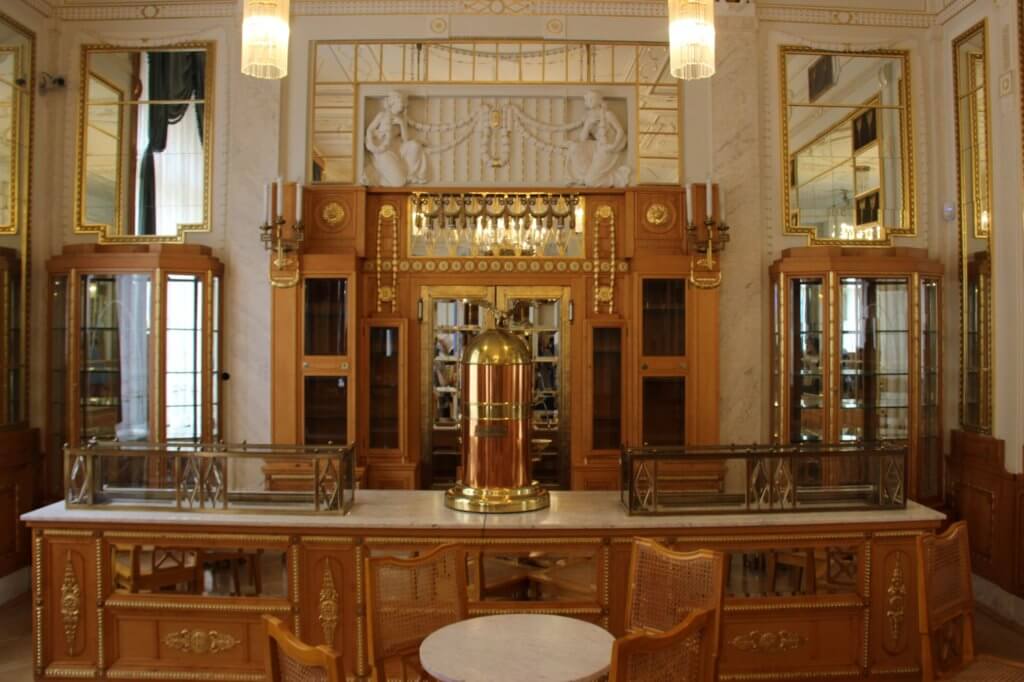
Alongside the main Smetlana Hall were a series of lounges – segregating women and men in its early days. The series of parlours for women were each decorated by different artists. The lounge for dining with a large copper and brass coffee machine in a central place on the counter surrounded by pale honey polished wood and mirrors.
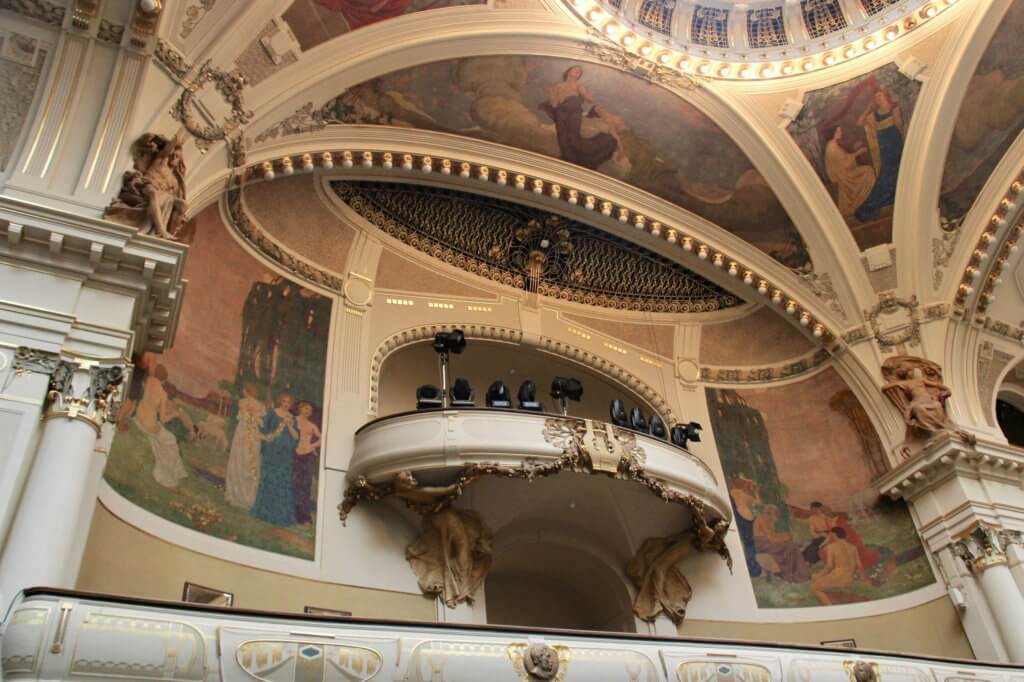
Easy to spot is the Mucha room – well actually it is called the Mayor’s Room. The decoration and windows so clearly his style. In this room the large murals around the wall promote Slav (Czech) values. All aspects of this room were designed by Alfonse Mucha so all aspects combine -the stained glass windows, decorations, furnishings.
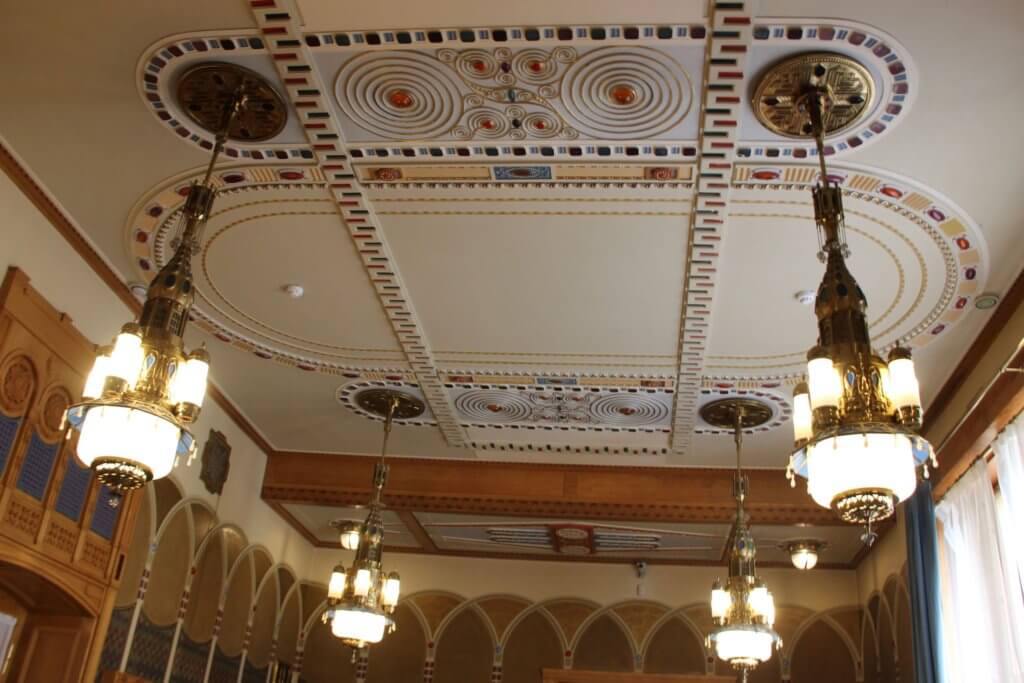
In other halls it was smaller details were as incredible as the overall effect. Macrame curtains in the Moravian room. An early heater with brass covers. A colourful, traditionally patterned, mosaic fountain in the parlour dedicated to Božena Němcová, a woman who is a famous writer in the Czech republic. Oriental-inspired art deco detail on the ceiling in the Oriental Room.
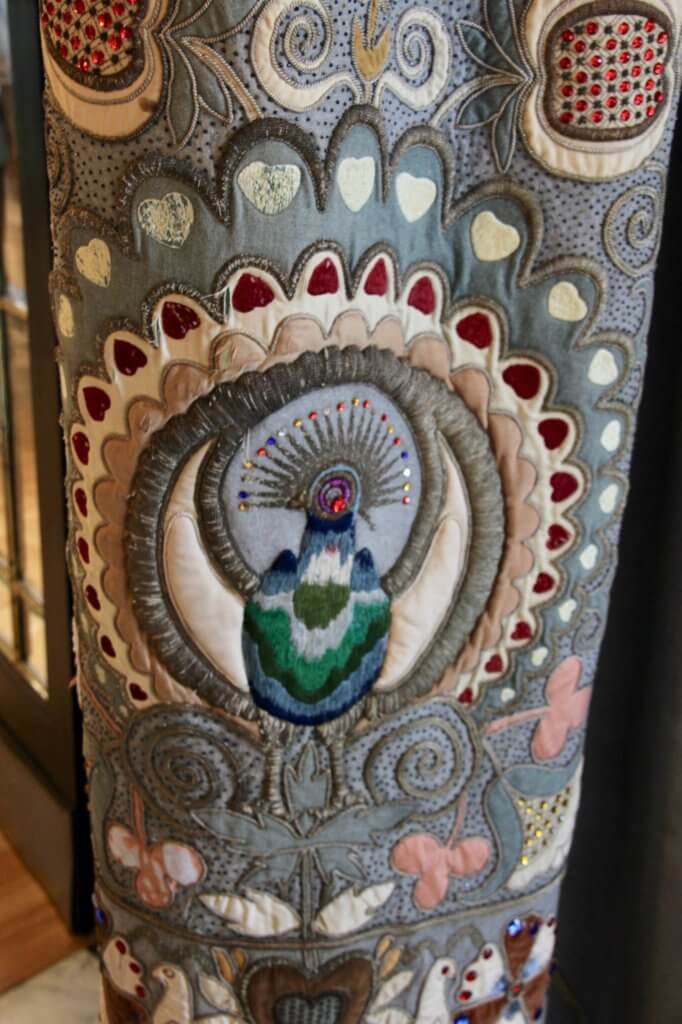
The main concert/congress hall is named for Smetana a Czech composer. It is decorated with frescoes depicting Czech composers and compositions along the upper walls and ceilings. A large stucco statue either side of the stage celebrating the work of Smetana and another well known Czech composter Dvořák. A large pipe organ – so many pipes it can be heard on the street outside when played – Oh I wish, maybe next time.
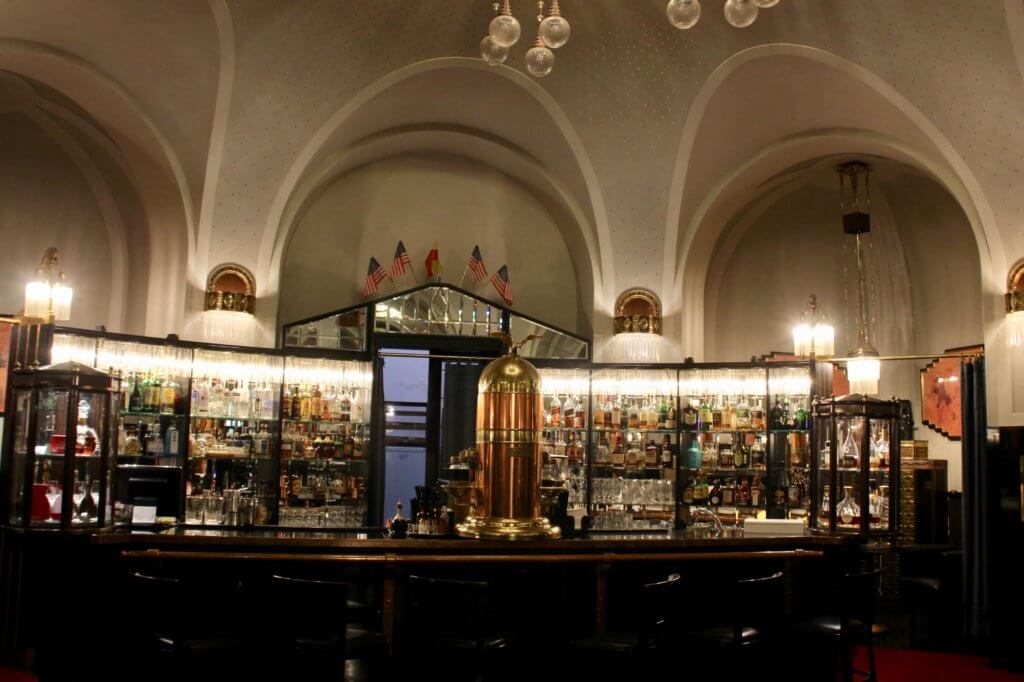
The building is a surprising seven storeys. Surprising because this is not visible from the street. Downstairs, below ground level a bar and restaurant. The American bar like the lounge upstairs also has a magnificent coffee machine of copper and brass topped with the figure of an eagle centre counter. Behind it, mirror-backed shelves filled with colourful alcohol choices, all surrounded by art deco.

In keeping with our immersion in Municipal House, we treated ourselves to breakfast in the ‘House’. There are several restaurants and bars are still operating throughout the house. We chose the Kavárna Obecní dům at the entrance. This was one of the earliest to open – with an aim to help cover the deficit as the budget increasingly overshot in the initial building estimation. Tables outside were homelike for us but we were keen to sit inside to get the full decorative experience.
Breakfast in restaurant perfect service, exquisite décor both creating the step back in time feeling. Simple but fresh ham roll. Sticker shock but you expect that – worth every Kronin.
Bedazzled after Municipal House we set off for our second visit for the day. I am being precise about the “second” bit! On our slow train ride to Bruge, we had eventually sorted ourselves a few rules to balance comfort with learning. Firstly, lying about too late in the morning is not ideal in the high heat of summer in Europe. Secondly trying to fit too much in is not ideal hence choosing a couple of favourites and spending more time in those suits us better. Thirdly local transport cards save a lot of fussing about with ticket machines.
So our second visit for today is Strahov Monastery and Library. A lovely tram ride across and along the river, up the hill overlooking Prague and to the small township surrounding the Monastery. Another navigational oops took us a kilometre up the hill to the tower where we realised the Library was back where we had started. The walk up through the leafy forest and back through the gardens made the hot sunny day walk worthwhile.
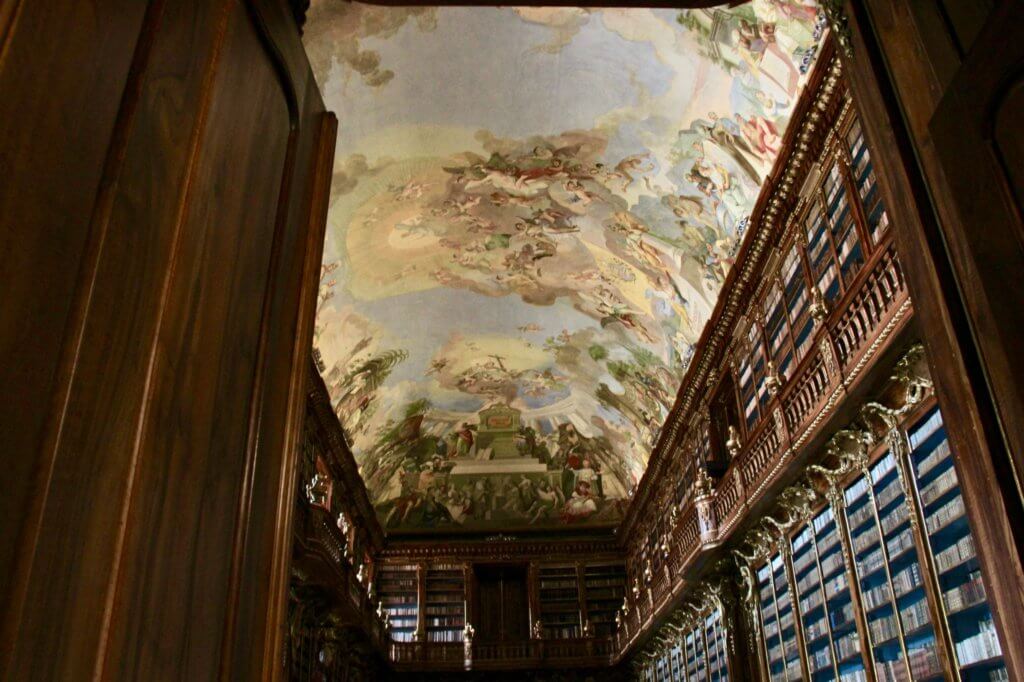
A long queue to purchase tickets to see the Strahov Library – a library nominated one of the most beautiful in the world. The queue moved exceptionally quickly for us – unfortunately for those ahead who did not have cash and had to peel off. The cash condition not displayed until inside the small entrance. Fortunately for us on this day we were still in Central Asia travel mode where cash was king.
Upstairs to the library halls – I see the first and walk towards it oblivious to anything else. Chris alerts me to the woman chasing alongside me. The ticket person – eye to eye with me – changes from stern to laughter when she notices my look of apology and Chris’s humorous (to him) comments about my ignoring process.
The first hall of the library –the Philosophical Hall is visible through a small roped off door. A feast of dark panelled wood, white stucco and frescoes across the walls and ceilings. Floor to high ceiling walls lined with ancient books – 42,000 of them. Both Chris and I simultaneously had the thought that to study in that space would be so contemplative and leave you feeling as though you are joined with history.
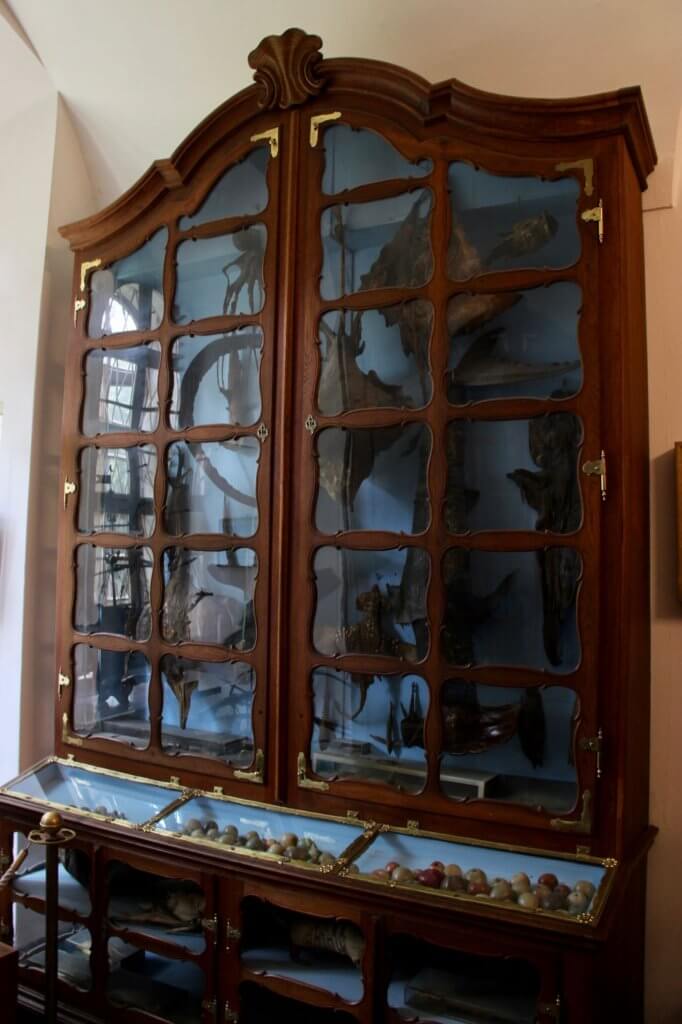
The second library is at the other end of the corridor along which you pass through a Wunderkammer. The precursor to Museums this was a private collection of all sorts. Along the passageway were many curiosities from waxed fruit, to a serene stone buddha head, to a preserved Hammerhead shark. Along with ancient illuminated manuscripts and intricately inlaid wood display cabinets.
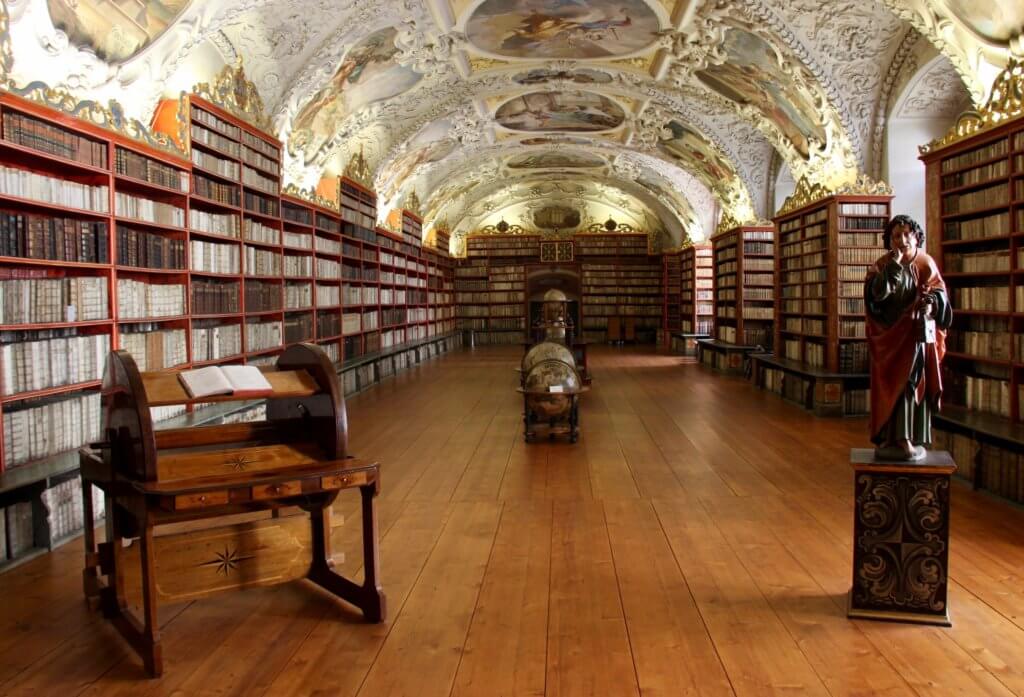
The second library, the Theological hall again with pastel frescoes surrounded by white stucco decoration and lined with books. Along the centre of the hall are a series of ancient globes. Luckily for us, most visitors only viewed the Philosophical Hall and did not come down the passageway leaving time for a lengthy viewing to drink the beauty and books in.
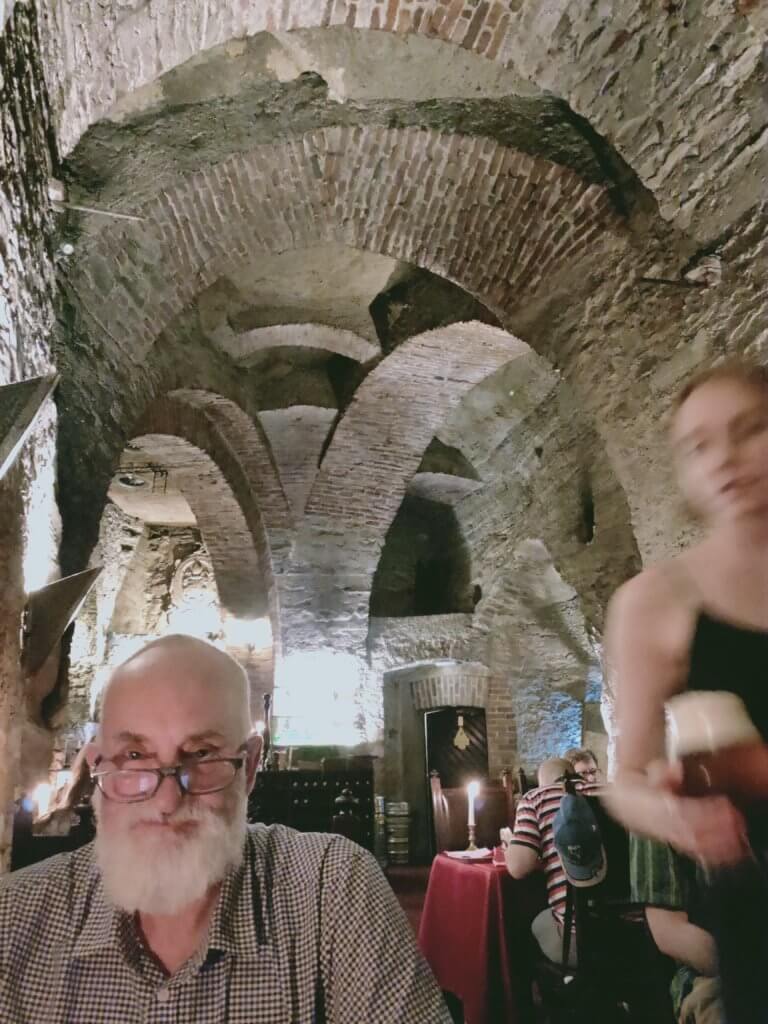
Thirsty work all of this – or so we told ourselves. Time for a beer. Just the place to find one – a brewery in the Monastery – making beer for 800years. The outdoor beer garden seemed a bit too every day – despite the warm summers day I wanted to sit in the brewery restaurant. So pleased we did – it was dark, candlelit with stone arches overhead. So atmospheric we decided to have a beer and lunch!
After lunch, we wandered back towards the Charles Bridge an icon of Prague Chris was keen to see. I was sure our transport tickets would last back to town given they were just expiring. Chris not convinced bought new tickets and felt relieved as we got on the tram to find Inspectors – who look like fellow tourists – checking tickets.

Finding Charles Bridge and the shopping precinct in the old town across the bridge overflowing with tourists we decided to head for home after a quick walk across.
Our final dinner was at Ossegg – I had read great things but I think maybe it or me was having an off night. The interior was minimalist – modernist. The beer was good. The food was not quite the experience I expected – lukewarm and it seemed not freshly cooked.
Travel Tips
Municipal House Tour – It had been hard to establish whether we could get a tour in English, but such was the building we took our chances thinking even if we understood little, the building would be enough. Arrived to find the tour in English with other languages have written copies of the information.
Strahov Library – to be able to take a tour inside the library the tour needs to be booked by email and needs time. We sent an email the night before and was told it was booked out until August!
we used the Transport Card – there is also a Tourist Card that gives travel on public transport and discounts on entrance fees

